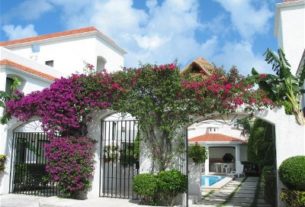The foods of the Pacific coast resort Puerto Vallarta can be as simple—and delicious—as those sold by vendors who stroll the beach hawking skewers of fire-roasted shrimp and trays of freshly shucked oysters or the street vendors like Caesar who, wielding a machete, sells fresh coconuts at his stand on Aquiles Serdán to a long line of waiting cars and pedestrians.
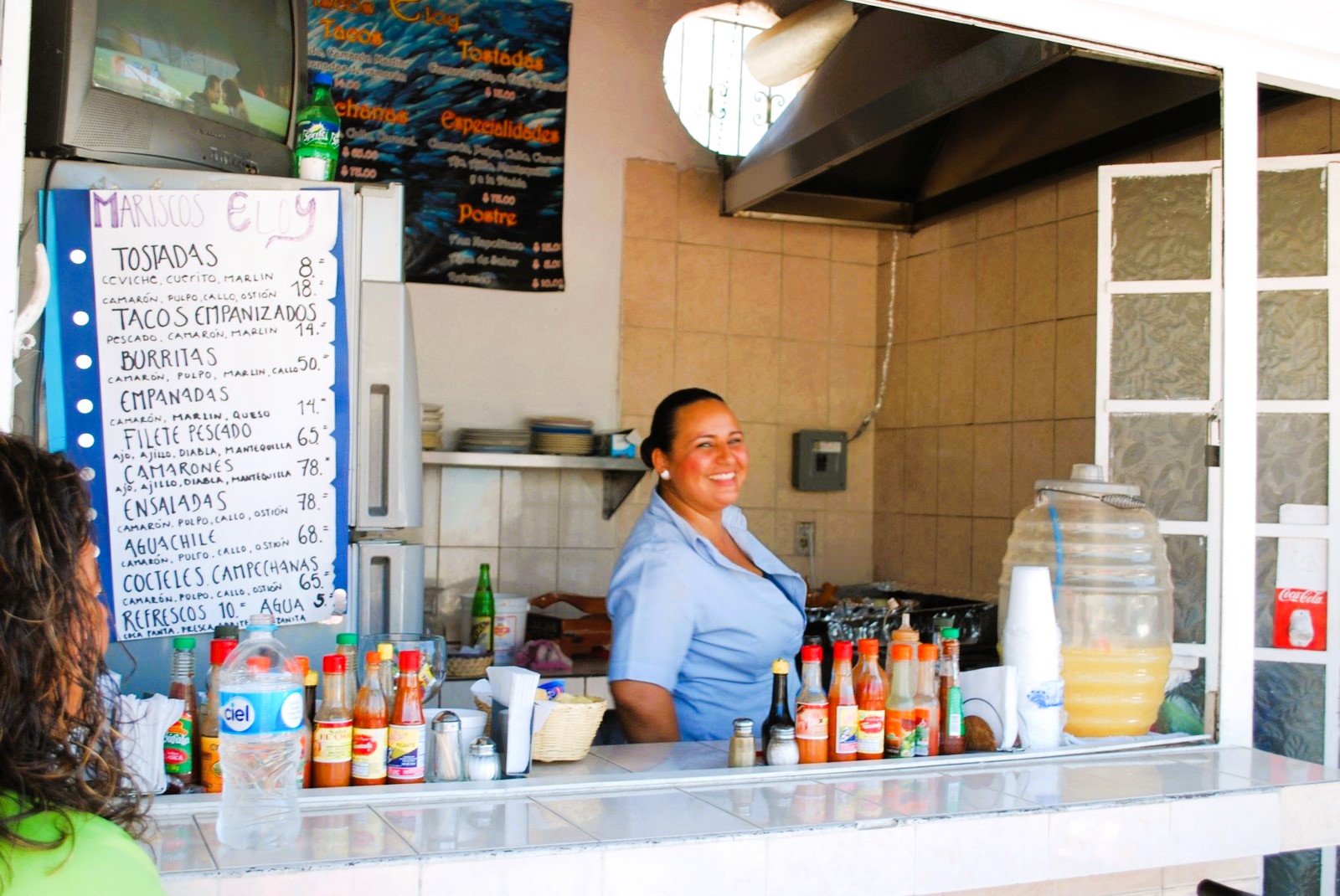
I’ve only had tuba—a drink made from coconut palm juice, walnuts, apples, sugar, and several other “secret” ingredients all marinated overnight—from one source: a man all dressed in white including a white hat, who stands on the Malecón, the lively walkway lined with public art, restaurants, a fishery, and stalls. He arrives early each morning and stays late into the night only to be back in the same place the next day. Tuba seems to be a specialty of Puerto Vallarta and the beach villages to the north and south.
Pull up a stool at the outdoor counter of La Burrita Marinera, and choose among offerings such as enchiladas, tacos, and tostadas, made with shrimp, octopus, marlin, and other fish caught that morning in Banderas Bay.
Or indulge in Pescado Zarandeado, grilled red snapper with garlic and achiote, a pre-Hispanic dish said to have originated from the nearby State of Nayarit and the house specialty at Mariscos Tinos Puerto Vallarta. The food and ambiance of this second-floor restaurant located in the city’s Centro zone, near the water, so impressed Mexican food authority, cookbook author, and restaurateur Rick Bayless that he featured their recipe on his TV food show “One Plate at a Time.”
These are heritage foods passed down through the centuries, making them part of the reason that Mexican food earned a place on the very short list of cuisines protected by UNESCO as an “intangible cultural heritage of mankind.”
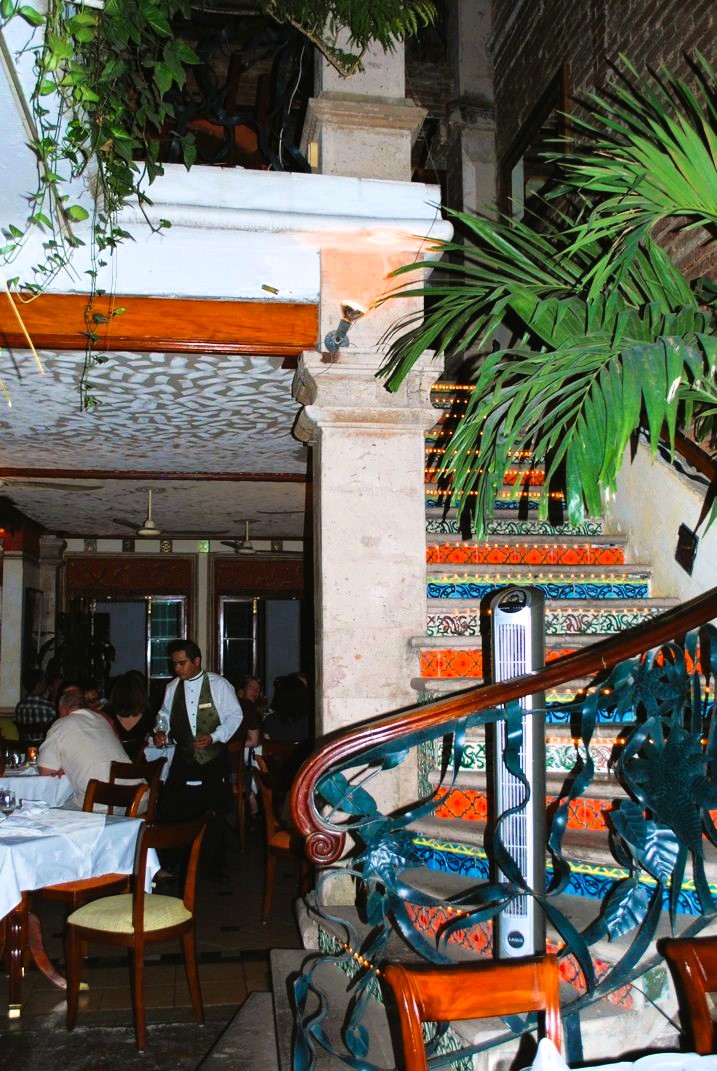
My introduction to these dishes came about when I joined Vallarta Food Tours’ “Original Downtown Tour,” a 3.5-hour, 1.5-mile walking tour with eight food stops—yes, I know it’s a lot of food, but I like to eat. The tour, voted #4 food experience in the world by Trip Advisor in 2020, as well as #5 tour in Latin America for 2023, began at the corner of Vallarta and Aquiles Serdán streets in the city’s Romantic Zone where our guide presented each of us with a list of the eateries we’d be visiting. As we walked, he provided an overview of the history and culture of the foods we’d be tasting, and of the sights we’d be passing, such as Nuestra Señora de Guadalupe, the beautiful central church with Renaissance-styled towers and magnificent views of the city and water.
But street food wasn’t my only gastronomic experience in Puerto Vallarta, one of the most popular tourist destinations in Mexico and one that has also maintained its colonial charm. I also received an invitation to the annual Festival Gourmet International which bills itself as Puerto Vallarta’s greatest culinary tradition with more than three dozen participating restaurants and wineries and over 75 chefs from around the world. Founded in 1995 by Thierry Blouet, Heinz Reize and Roland Menetrey, chefs/restauranteurs with long-established roots in the city, who are known as the “Three Musketeers.”
With more than 1000 restaurants, tours and festivals help give visitors a taste (excuse the pun) of what this city on Banderas Bay has to offer.
If you’re old enough to remember the movie “Cleopatra” starring Elizabeth Taylor and Richard Burton, and their torrid love affair which led each to leave their spouses, divorce, marry, and then divorce again, you might be interested in knowing that during the height of their passion, Burton purchased a home in Puerto Vallarta for Taylor. That home is now Casa Kimberly, a nine-room boutique hotel,and The Iguana & Tequila Bar because, after all, “Night of the Iguana” was the movie Burton was filming here. Those spending the night might want to opt for the Elizabeth Taylor suite with its pink, heart-shaped marble bathtub made to Taylor’s specifications. As for the food, suggestions include sea bass with hibiscus and chipotle and grilled salmon with huitlacoche (corn fungus). As for the bar, expect local and hard-to-find tequilas and mezcals.
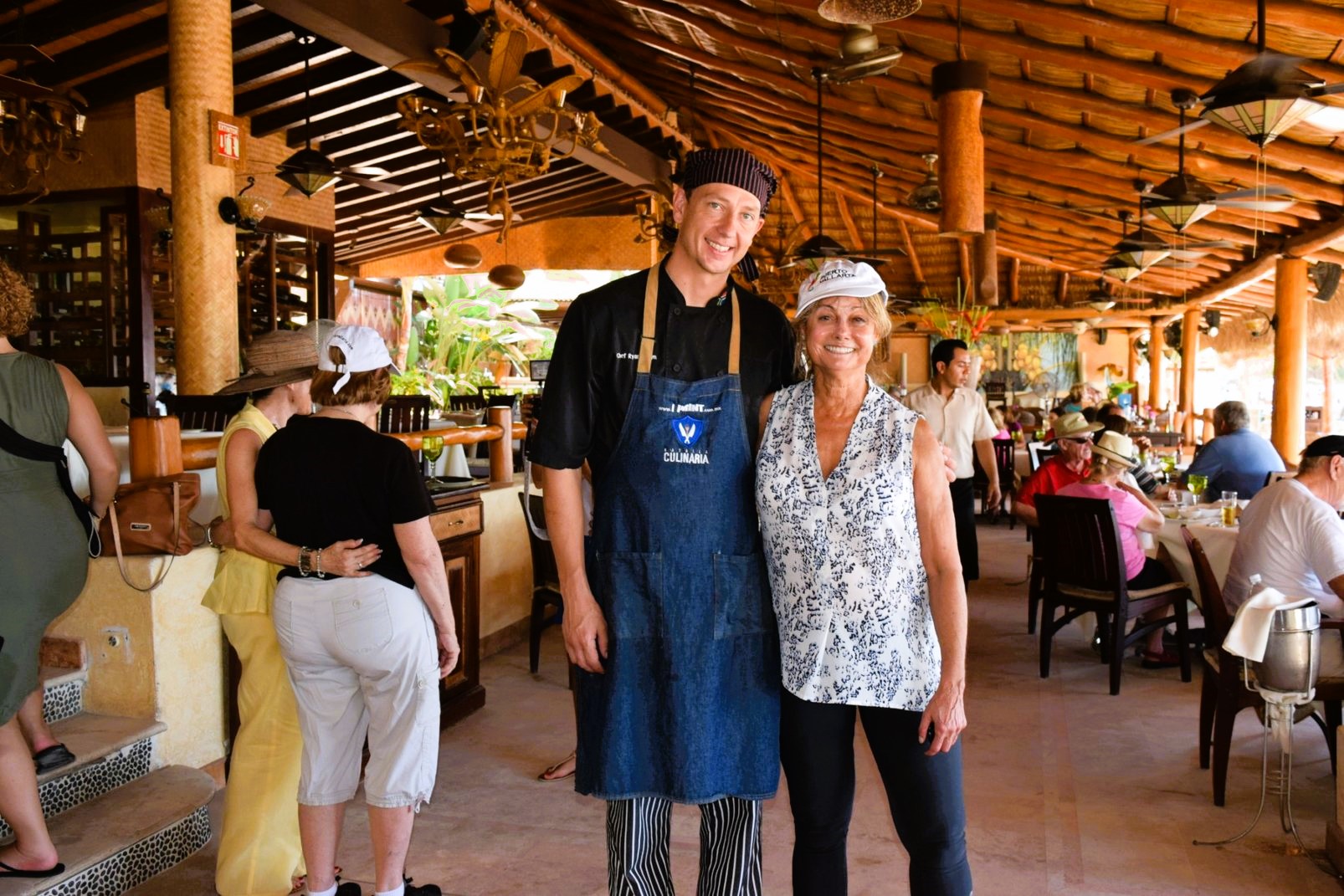
When La Palapa opened 65 years ago, it was on the southern edge of Puerto Vallarta, and the only way across the Río Cuale, which separated the town from the open-air thatched roof restaurant on Playa Los Muertos or Beach of the Dead, was on foot or by car if the water wasn’t too high. The beach is a lively place with strolling musicians and a long pier where pangas line up, ready to take passengers to several beach villages further south that are unreachable by road. The food at La Playa is Asian and French-influenced tropical classic Mexican—tortilla soup, octopus tacos, Punta de Res, Mexican-style beef tips con carne with corn tortillas, and huevos rancheros. Next door, with seating on the beach, is their sister restaurant, the open-air El Dorado.
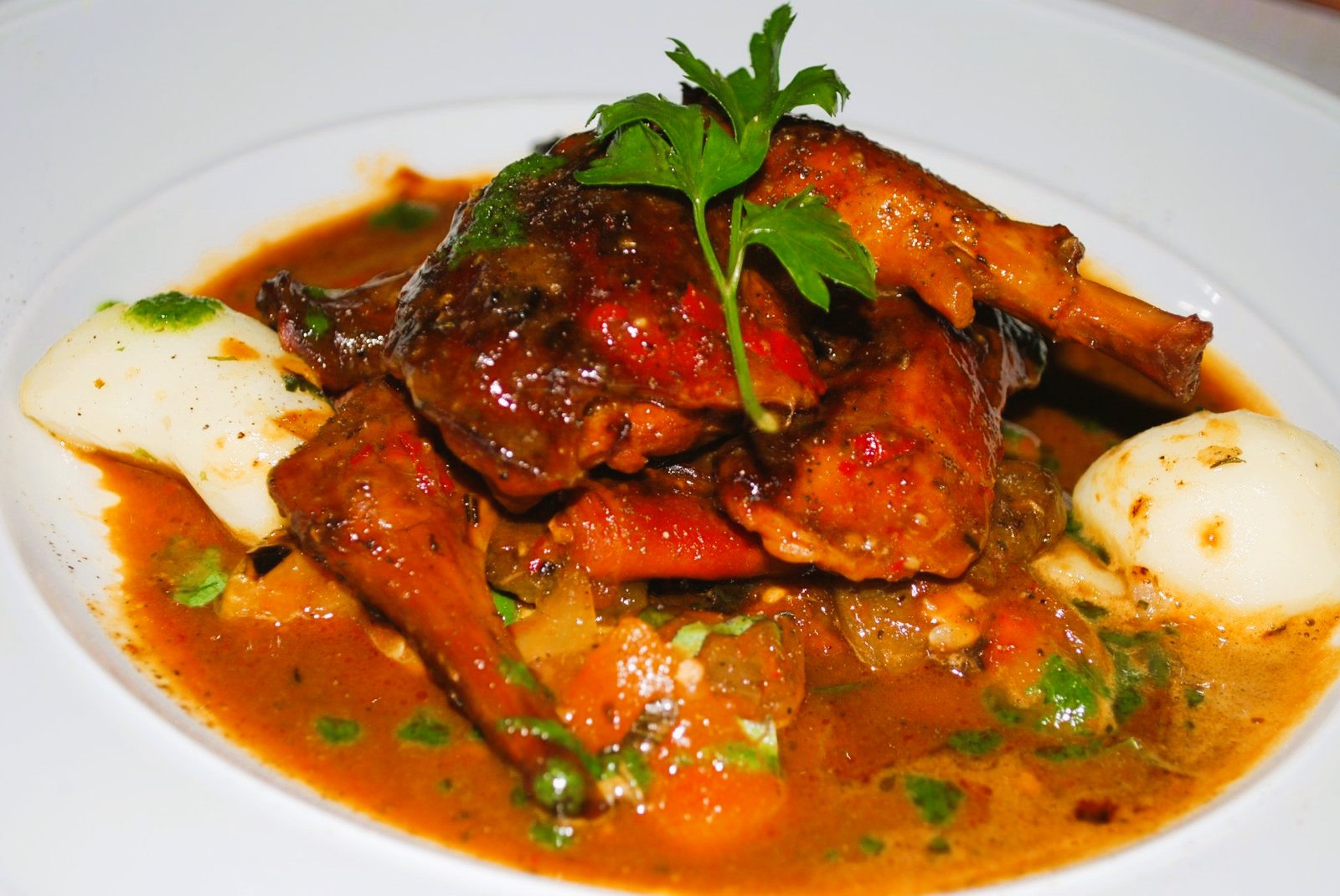
Creativity in both cuisine and design are the hallmarks of such restaurants as Trio, located on Guerrero, the oldest street in Puerto Vallarta. Trio is an elegantly cosmopolitan restaurant with statuary, gardens, elaborately tiled floors, local art, and a menu featuring both a fusion of Mediterranean and Mexican along with a homage to traditional Mexican dishes like roasted chicken with a chile-lime rub, and chile-roasted red snapper fillet with a lime cilantro sauce.
Theirry Blouet’s restaurant, Café Des Artistes, which opened more than three decades ago, is both a visual and culinary delight. Each level of this terraced restaurant opens up to a different scene—a terraced lush garden space that’s all blooms and foliage, a Huichol artisan-designed piano bar, and—because gardens and the lushness of Puerto Vallarta are so special—another garden room overlooking the exterior gardens. Though the menu changes frequently, dishes include Chili with Passion Fruit Mousse, Marinated Broiled Octopus with Chicatanas, and Roasted Sea Bass with Beurre Blanc and Chipotle. In keeping with the traditional cuisine, there’s also Zarandeado red snapper on the menu as well.
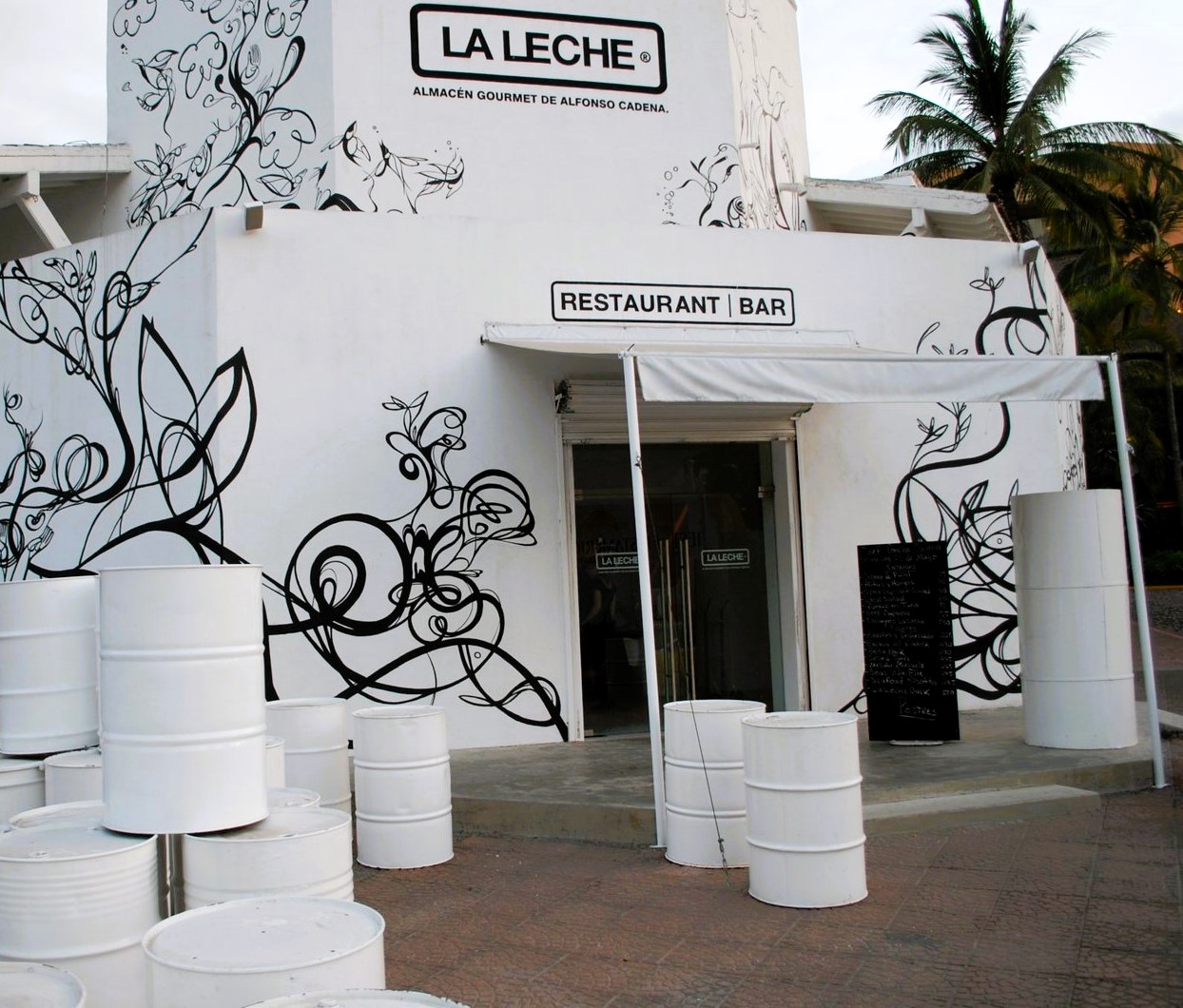
Probably the most unique of the restaurants in the city—and that’s saying a lot as creativity is a byword for design here—is La Leche. The name means milk and the concept is taken to the max. Almost everything is a pristine white, both inside and out, and the menu—well, as you would expect, milk is a common ingredient in such offerings as Duck’s Milk (duck in a confit garlic sauce with potato cakes) and Cottage Cheese Cake with Caramel Sauce, as well as El Chato, a horchata cocktail.
But not to worry. There are other colors on the spectrum such as the Chamorro Glazed Stew in Chili Sauce, duck in a sweet mole, a light blue Perla Negri, and their very pretty and pink-colored Grey Goose Cosmopolitan.
Related articles on MexConnect
- Falling in love with a Mexican girl led to a jewelry business in Puerto Vallarta
- Puerto Vallarta: escape to paradise
- New Year in Puerto Vallarta, 1958
- Interactive map of Pacific Coast beaches

